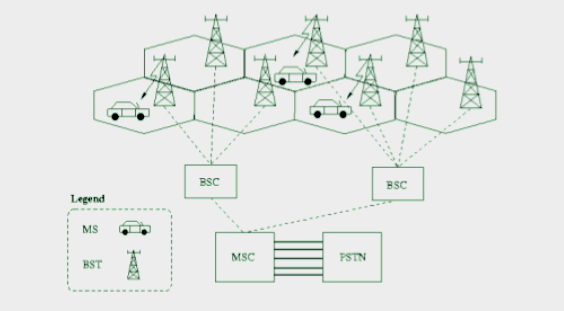Versatile systems have turned into the foundation of broadcast communications lately, with the far reaching selection of PDAs, tablets, and other cell phones. The advances that power the systems proceed to develop and progress alongside the hardware purchasers use to interface with them. 
A Web of Connected Cells
Versatile systems are otherwise called cell systems. They're comprised of "cells" that interface with each other and to phone switches or trades. These phones are regions of land that are normally hexagonal, have no less than one handset, and utilize different radio frequencies. These handsets are the phone towers that have turned out to be omnipresent in our electronically associated world. They interface with each other to hand off parcels of signs—information, voice, and content—at last conveying these signs to cell phones, for example, telephones and tablets that go about as collectors.
Suppliers utilize every others' towers in numerous zones, making an intricate web that offers the most stretched out conceivable system scope to supporters.
Frequencies
The frequencies of versatile systems can be utilized by numerous system endorsers in the meantime. Cell tower destinations and cell phones control the frequencies so they can utilize low-control transmitters to supply their administrations with the slightest conceivable impedance.
Driving Mobile Network Providers
Cell specialist co-ops in the U.S. are many, extending from little, provincial organizations to expansive, surely understood players in the broadcast communications field. These incorporate Verizon Wireless, AT&T, T-Mobile, US Cellular, and Sprint.
Kinds of Mobile Networks
Diverse kinds of portable advancements are utilized to give versatile system administrations to clients. The vast specialist organizations change as to which they utilize, so cell phones regularly are worked to utilize the innovation of the planned bearer. GSM telephones don't take a shot at CDMA systems, and the other way around.
The most regularly utilized radio frameworks are GSM (Global System for Mobile Communication) and CDMA (Code Division Multiple Access). As of September 2017, Verizon, Sprint, and US Cellular utilize CDMA. AT&T, T-Mobile, and most different suppliers around the globe utilize GSM, making it the most broadly utilized portable system innovation. LTE (Long-Term Evolution) depends on GSM and offers more noteworthy system limit and speed.
Which Are Better: GSM or CDMA Mobile Networks?
Flag gathering, call quality, and speed rely upon numerous elements. The client's area, specialist co-op, and hardware all assume a part. GSM and CDMA don't vary much on quality, however the way they work does.
From a shopper point of view, GSM is more helpful on the grounds that a GSM telephone conveys all the client's information on a removable SIM card; to change telephones, the client essentially swaps the SIM card into the new GSM telephone, and it associates with the supplier's GSM arrange. A GSM organize must acknowledge any GSM-consistent telephone, leaving shoppers a lot of flexibility over their decisions in gear.
CDMA telephones, then again, aren't as effortlessly swapped around. Bearers recognize endorsers in view of "whitelists," not SIM cards, and just affirmed telephones are permitted on their systems. Some CDMA telephones do have SIM cards, yet these are to connect to LTE systems or for adaptability when the telephone is utilized outside of the U.S. GSM wasn't accessible in the mid 1990s when a few systems changed from simple to computerized, so they bolted into CDMA—at the time, the most exceptional portable system innovation.